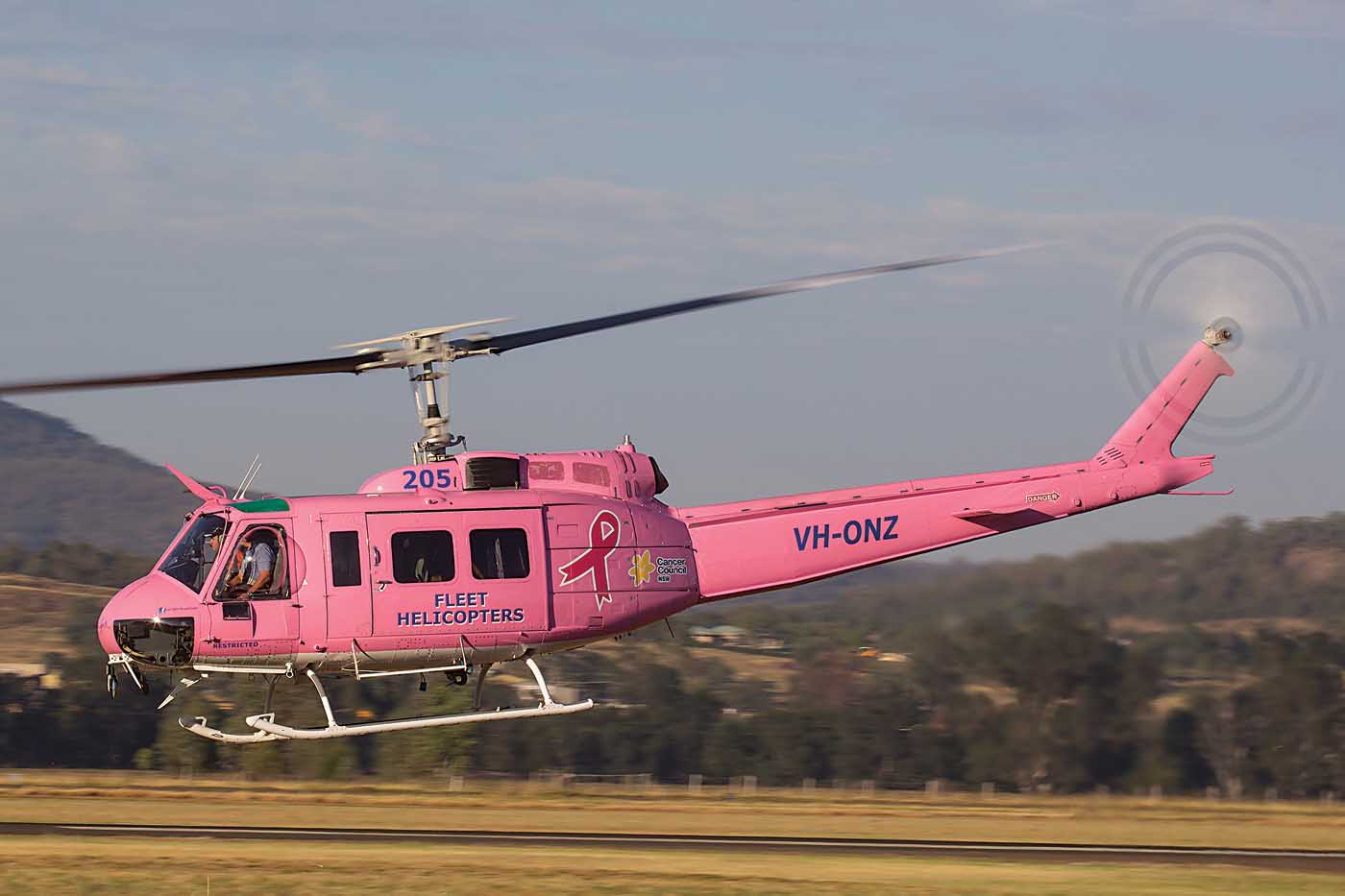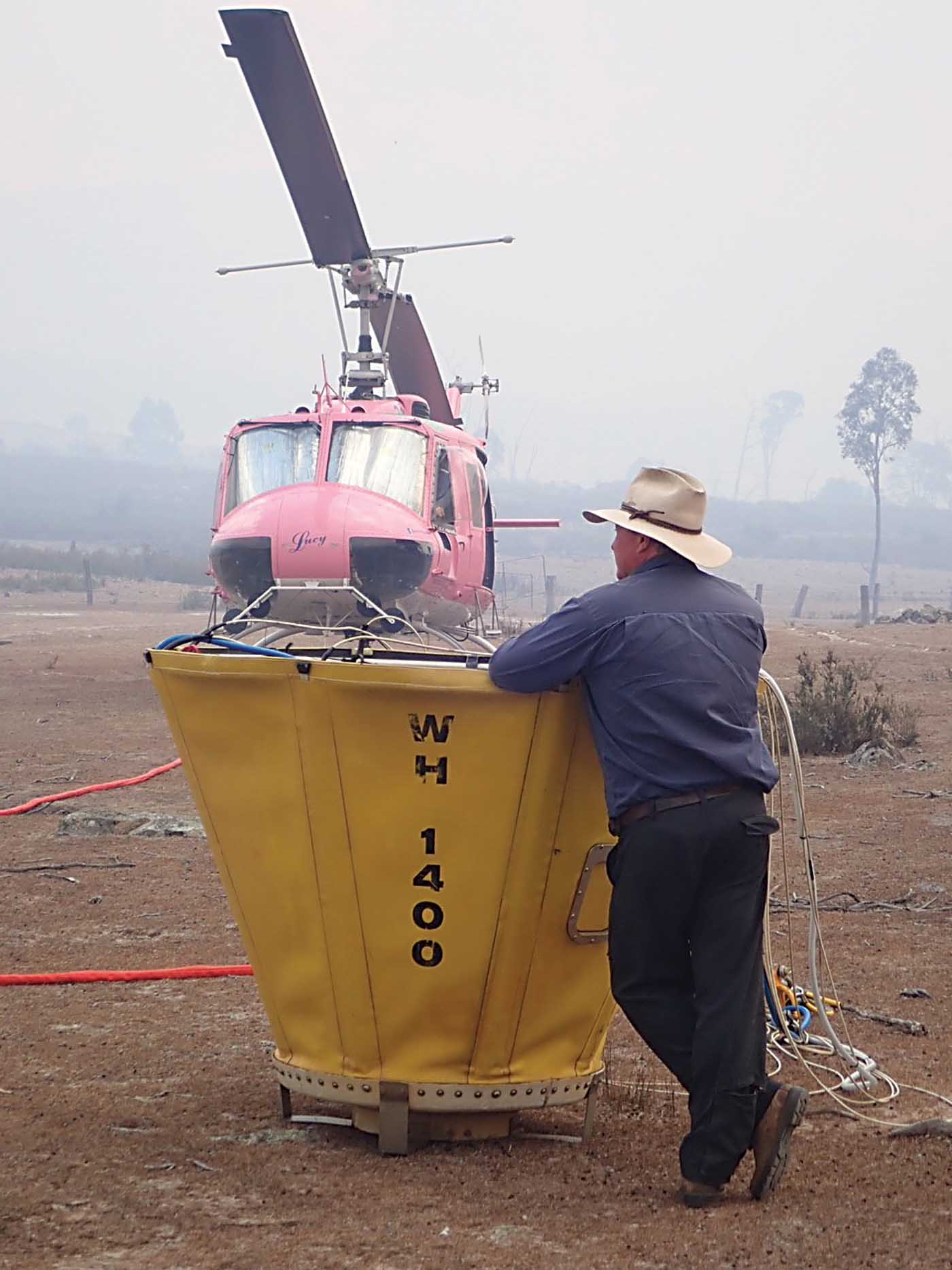“Thinking back on it all, the calmness that I had when [the helicopter] initially hit the water came from thinking that I’ve done this before; there was no panic in me because I just thought, OK, this is what we’re trained for,” said Fleet Helicopters chief pilot Lachie Onslow, as he recalled the moment his Huey crashed into a reservoir while firefighting on Jan. 9, 2020.
Just one month before the crash, he had taken a helicopter underwater egress training (HUET) course. To him, there’s no doubt that it saved his life that day.

Onslow was flying Fleet Helicopters’ iconic 1966 Bell UH-1H Huey known as Lucy, widely recognized for its bright pink livery for cancer awareness. Assisting with firefighting operations on the Clyde Mountain Fire in New South Wales, Australia, he had just refueled and was about to fill the first bucket of his last sortie of the day, when the aircraft made a “growling noise” and suddenly lost power.
“I remember I got two ‘maydays’ out, but it was probably only three or four seconds,” before the helicopter hit the water, said Onslow, who has been a pilot for 25 years.

The jarring impact as the helicopter hit the water dislocated Onslow’s left shoulder, and the cabin almost immediately started to fill with water and roll over. The aircraft became lodged in a bank in the Ben Boyd Reservoir, with the skids just barely visible above the water.
“I put my hand on the door handle and undid my belt, and the door wouldn’t open,” Onslow recalled. “So then I tried the copilot side . . . [and] couldn’t get that door open. . . . Then I went back into the rear of the cabin, and there was just a tiny little pocket of air caught on the roof, which was actually the floor of the helicopter. I pushed my head up into this little gap and got a breath of half water, half air.”

When he couldn’t get either of the helicopter’s sliding doors open, he punched one of the windows out, “and I swam through it and popped up.”
HUET training for pilots and crew is a requirement with the NSW Rural Fire Service, which Lucy the Huey was operating on contract for.
“The mental state that I was in because of that training . . . it had given me the opportunity not to panic,” said Onslow. “Apart from the physical side of how you deal with it, the mental side was pretty important.”

While there are numerous companies around the world that offer HUET courses, Onslow said he participated in a one-day course that had students go through multiple scenarios in a fuselage trainer — from a roll-over under water, jammed doors and being blindfolded, to freeing both oneself and an incapacitated passenger.
“It’s the best money I’ve spent on myself,” said Onslow. “I’d recommend the training to anybody who operates around any sort of water. And it’s really beneficial for any other type of emergency; it just gives you the training to relax and keep a cool head.”









